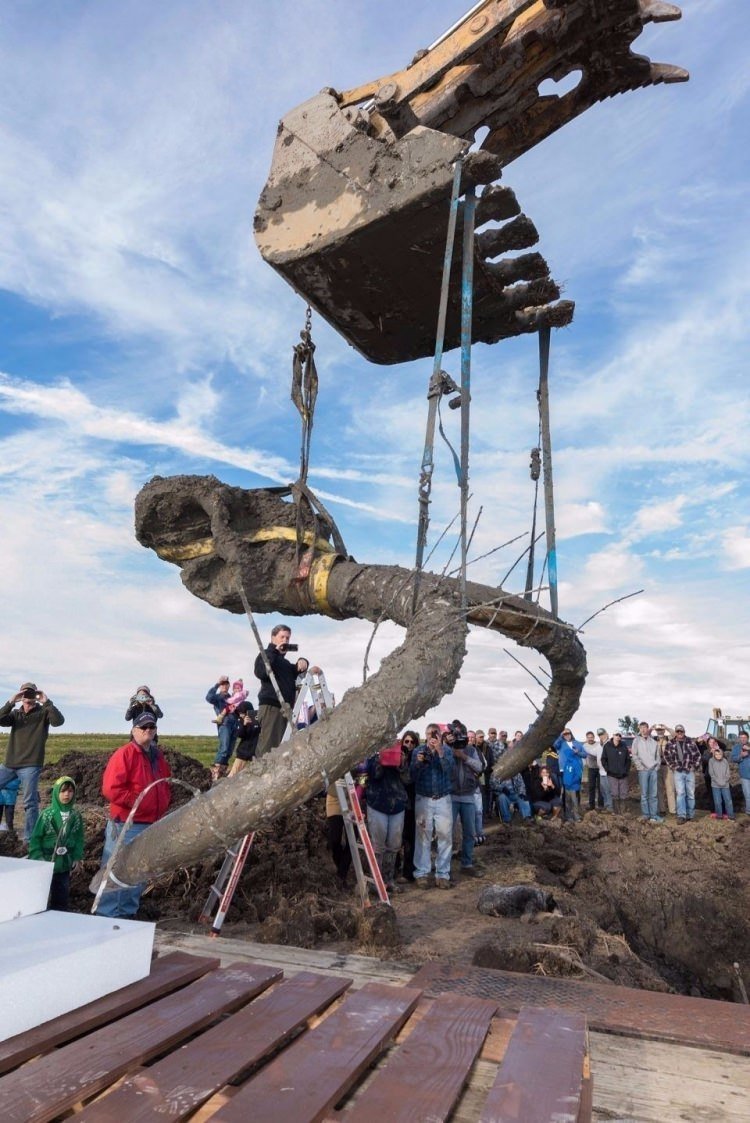The extinction of megafauna in the Americas is one of the most fascinating and debated topics in the study of ancient ecosystems. From mammoths to giant sloths, these magnificent creatures disappeared between 11,000 and 15,000 years ago. Understanding the causes behind their extinction involves considering multiple factors—from climate shifts and comet impacts to human intervention. This article will explore the prevailing theories, including climate change, human hunting, and the potential interplay between them.
The Discovery of the Mammoth in Chelsea, Michigan
In 2015, a farmer named James Bristle unearthed an almost complete mammoth skeleton while digging in a field in Chelsea, Michigan. This incredible find dates back between 11,000 and 15,000 years, providing a direct link to the era when megafauna roamed the American continent. Discoveries like these give us tangible connections to the past and clues about the factors that might have led to the extinction of these animals.

The Younger Dryas Impact Theory and Climate Change
One of the key theories explaining the extinction of megafauna is tied to climate change. The Younger Dryas Impact Theory proposes that a comet or asteroid struck Earth approximately 12,800 years ago, triggering the Younger Dryas cooling event. This event led to a sudden drop in global temperatures, profoundly affecting the environment.
Environmental Consequences of the Younger Dryas Event
- Sudden Climate Cooling: The drastic cooling that occurred during the Younger Dryas had severe consequences for megafauna. Many species, which were accustomed to a warmer climate, found it difficult to adapt to the rapid changes in temperature. This climate shift resulted in changing habitats, with more open tundra-like landscapes replacing grasslands and forests, thereby reducing food availability.
- Wildfires and Habitat Destruction: The impact event may have also triggered widespread wildfires. These fires would have destroyed vast tracts of habitat, making it even more difficult for megafauna to find food and shelter. Such sudden and harsh environmental changes could have overwhelmed species that relied on specific ecological niches, leading to a cascade of extinctions.

Human Overhunting: The Overkill Hypothesis
Another major hypothesis points to human overhunting as a significant contributor to the extinction of megafauna. This theory, known as the “overkill hypothesis,” suggests that the arrival of humans in the Americas brought a new predator into ecosystems that had never before faced such a threat.
Evidence of Human Hunting
- Clovis People and Hunting Tools: Archaeological evidence points to the presence of early human cultures, such as the Clovis people, who used sophisticated hunting tools to hunt large animals. Bones of mammoths and other large animals have been found with cuts and markings indicative of human activity. This suggests that early humans hunted these animals extensively for food, tools, and clothing.
- Slow Reproduction Rates: Many of the large mammals had slow reproduction rates, meaning that even moderate hunting could have had a drastic impact on their populations. Unlike smaller animals that reproduce rapidly, megafauna such as mammoths took longer to mature and had fewer offspring, making them particularly vulnerable to overhunting pressures.

Combined Factors: A Perfect Storm
While both climate change and human hunting are compelling explanations, many scientists believe that the extinction of megafauna was due to a combination of factors. Climate change would have weakened the ecosystems that supported these large animals, and as their numbers dwindled, hunting pressures from humans could have tipped them over the edge into extinction.
Ecological Stress and the Role of Competition
- Resource Scarcity: The combined effects of climate change, habitat loss due to wildfires, and human hunting likely led to resource scarcity. Megafauna needed vast amounts of food to survive, and as grasslands were replaced by less fertile tundra, competition for the remaining resources would have intensified.
- Competition with Humans: Early humans were not only direct predators of megafauna but also competitors for the same resources. As humans began using tools and fire, they became more efficient in gathering resources that megafauna relied on, further putting pressure on these large animals.

Continuing the Investigation: The Search for Answers
Despite the strong evidence for both climate change and overhunting, the precise cause of the extinction of megafauna remains elusive. Recent discoveries, such as the mammoth skeleton found by James Bristle, offer new data for researchers to analyze, but the interplay between different factors makes this a complex puzzle. The Younger Dryas Impact Theory provides an interesting scenario of climate-induced stress, but the timing of human migration and their role in ecological disruption adds another layer of complexity.
Lessons for Today: Understanding Ecological Balance
The extinction of the American megafauna serves as a reminder of how delicate ecological balances can be. Whether due to natural events or human interference, the collapse of an entire category of species had profound effects on ecosystems, leading to cascading consequences for other species and the environment.
Studying these ancient extinctions offers valuable insights into the challenges faced by species today. In the face of rapid climate change and human activity, modern biodiversity is under threat. By learning from the past, we may find ways to mitigate the impact of these changes and preserve the species we have today.
Conclusion
The extinction of megafauna in the Americas is a multifaceted story that involves a mix of natural and human-induced factors. The dramatic cooling of the Younger Dryas period, likely sparked by an impact event, combined with the arrival of skilled human hunters, created a perfect storm that many species could not survive. Ongoing research, including the study of newly discovered fossils like the mammoth in Michigan, will continue to shed light on this fascinating chapter of Earth’s history.
While we may never fully understand all the details, what is clear is that these massive creatures were caught in a web of rapid environmental changes and human activities that forever altered the course of life on Earth. The lessons learned from their extinction can help guide us in addressing today’s environmental challenges, ensuring that history does not repeat itself.

